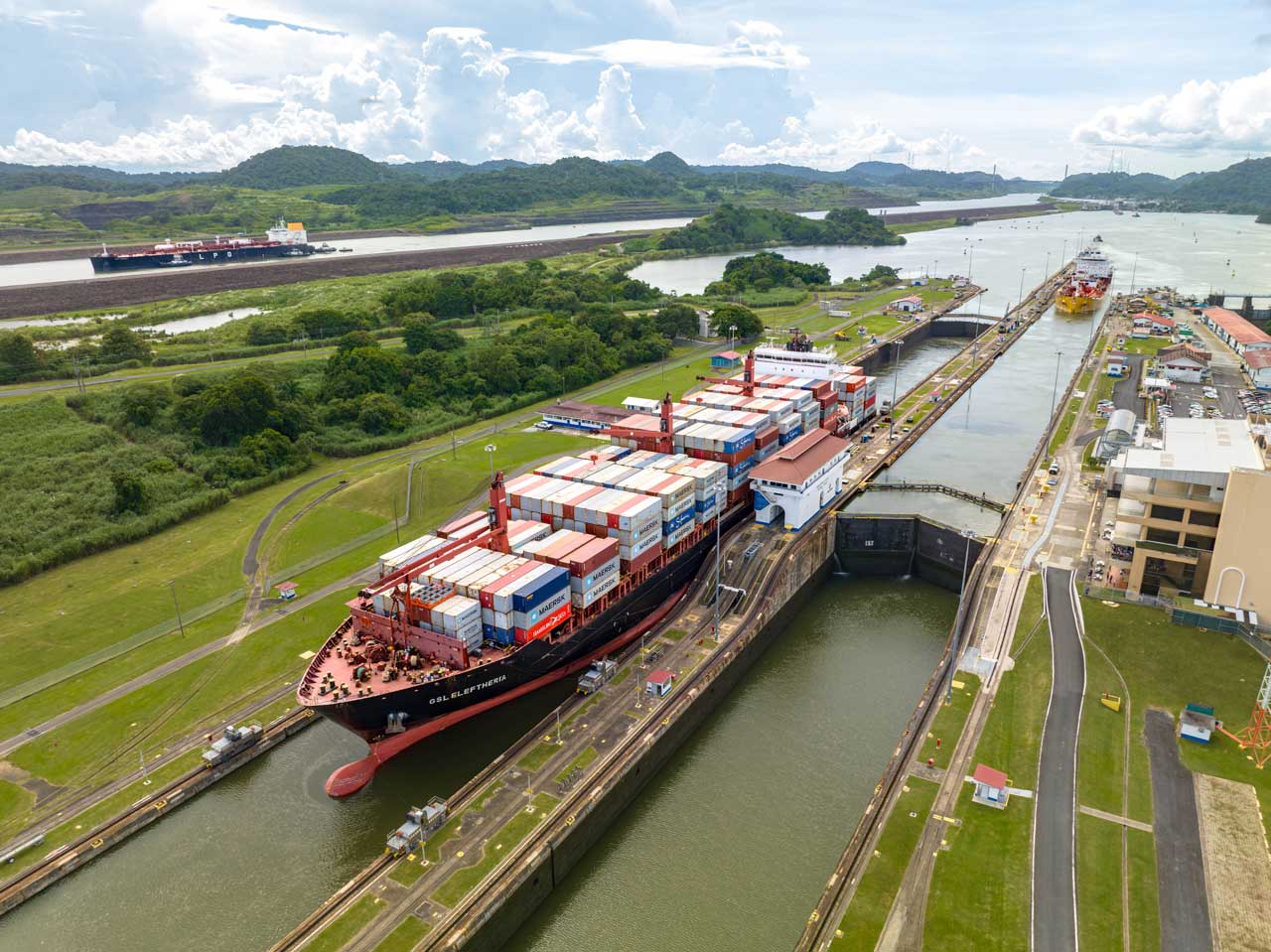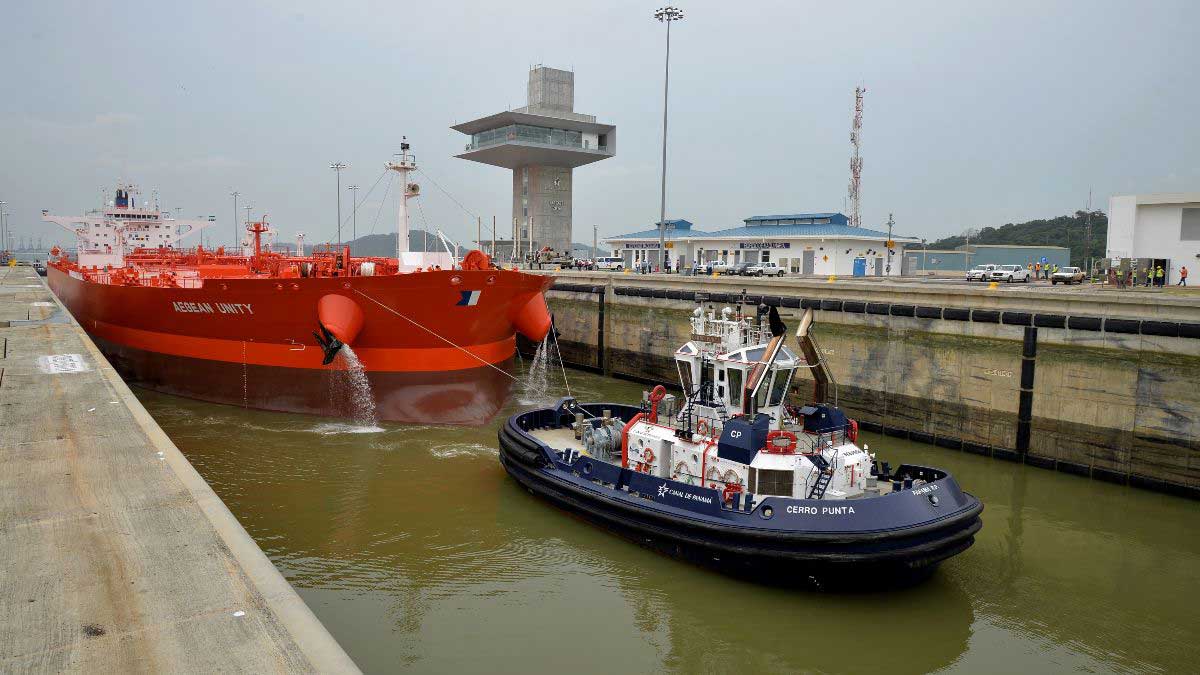PANAMA CITY, Panama, August 26, 2003 – The Panama Canal Authority (ACP) announced today that its enormous modernization and improvement project to deepen the navigational channel in Gatun Lake is 40 percent complete – ahead of schedule and within budget. The project’s goal is to deepen the channel in the Lake, the large, man-made body of water that all ships navigate when transiting the Canal. Among the many benefits, when complete, the deepening will provide an additional meter of water storage, a 45 percent increase. This would minimize future draft restrictions, enhancing reliability and improving vessel safety, and accommodate future demand for drinking water. The project is anticipated to be done by 2009.
Currently, the channel provides an unrestricted draft of 12 meters (39.5 feet), plus 1.5 meters (5 feet) of under keel clearance when Gatun Lake’s elevation is 25 meters (81.5 feet). The deepening project would permit the same conditions, but at a lower Lake elevation of 24 meters (78.5 feet).
“It’s hard to truly comprehend the enormity of this project. For the first time, our three major pieces of dredging equipment are working 24 hours a day, seven days a week to complete this important project. The channel deepening is really going to ensure unparalleled customer service – safe, reliable and efficient transits,” said Canal Administrator Alberto Alemán Zubieta.
The massive $190 million capital improvement project involves dredging approximately 7.1 million cubic meters from Gatun Lake and the Gaillard Cut channel, and the dredging of the 52 kilometers-long navigational channel from the south end of Gatun Locks to the north end of Pedro Miguel Locks. The project will help to accommodate the anticipated increase in Canal demand because the active water storage volume will rise by nearly 45 percent (from 770 million cubic meters to 1,420 million cubic meters), providing enough water for an additional six transits per day.
Fully committed to environmental stewardship of the Canal watershed, the ACP has ensured that the project is executed in an environmentally safe and responsible manner. In planning the project, the ACP’s Environmental Management Division created an Environmental Management Plan that requires the ACP to implement rigorous water conservation and management measures, as well as precautions to protect plant life in the Canal. In addition, several policies and procedures have been developed regarding the removal and disposal of materials from the Canal to prevent environmental problems. The University of Panama will assist in the analysis of water quality and the development of mitigation measures to help guarantee water quality.
The ACP is using the recently overhauled drill boat Thor for drilling operations. In addition, the dipper dredge Rialto M. Christensen and cutter suction dredge Mindi are currently at work excavating material around-the-clock. There are plans to augment the equipment used in the dredging by adding a new drill boat and a new cutter suction dredge, both of which should be operational within two to three years.
About the Panama Canal Authority
The Panama Canal Authority is the autonomous agency of the Government of Panama in charge of managing, operating, and maintaining the Panama Canal. The operation of the Panama Canal Authority is based on its organic law and the regulations approved by its Board of Directors. For more information, please refer to the Panama Canal Authority’s Web site: www.pancanal.com.
The Authority’s responsibility to the Panamanian people is paramount. The Canal belongs to the people and benefits from the Canal should accrue to as many Panamanians as possible. The Authority will plan its future so that it will continually contribute to the economic development and welfare of the citizens of Panama.
For nearly 90 years, the Panama Canal has served as the global gateway – a pathway for the shipment of major world commodities. Since the end of 1999, the ACP assumed the responsibility for the management, operation and modernization of the Canal as well as the protection and conservation of its watershed. In the past four years, the ACP has made significant strides – shifting to a market-oriented business model focused on customer service and reliability, making major capital investments for new and modern equipment and machinery, increasing safety and operational efficiency for customers, decreasing the time it takes ships to travel through the Canal and widening and deepening sections of the waterway. An important transportation link, the Canal services more than 140 different transportation routes from every corner – It is where major trading routes of the world connect and intersect providing safe, reliable and secure passage for all vessels.




